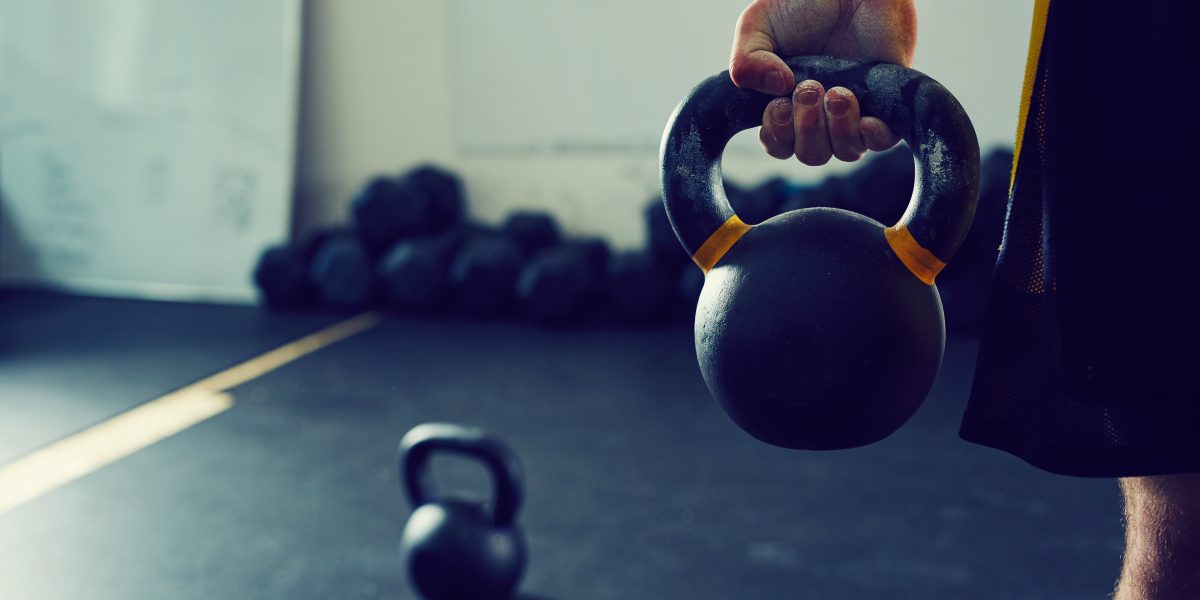I’d like to let you in on a secret today. There is a single program that can increase member retention and satisfaction, decrease stress on your coaches, reduce injuries, improve athletes’ technique, and foster your gym’s unique atmosphere! Does this sound too good to be true? It’s really just one simple class away. So, let me ask you this: Why do you still not have an OnRamp Program?
~Well, I will when we have ______ number of members.
~We don’t have the space.
~We just scale the regular workouts.
Do these excuses sound familiar? Have you heard them from other gym owners, or are you struggling to commit to the OnRamp ? I’ve helped start an OnRamp program at several gyms over the years and continue to hear similar reasons for not having this class. For those gyms literally just starting out who have an average of 2-3 people per class, I get it. In those first 6 months, you’re hustling hard. Most of your members are new, so almost every class is an on-ramp class. But, if your class sizes average more than 5 people, it’s time to consider a program specifically geared towards clients new to functional fitness.
What is an OnRamp Program?
I hope you have all had the pleasure of training at a box where all the members move well. They may not be moving the most weight or Rx-ing every workout, but every single one of them moves with subtle flaws at worst. The atmosphere is motivating, and you feel like the coaching staff has basically given you one-on-one attention despite having 8 other people in your class. As a gym owner and coach you can fine-tune each piece of this puzzle, but an OnRamp Program is the foundation that sets the gym up for success.
An On-Ramp program goes by many names: OnRamp, Roots, Foundations, etc. But basically it is a class for new members to your gym. It’s where they learn the basic skills needed to participate in regular workouts.

Every Athlete Deserves Your Attention
If you don’t have an OnRamp program, you’re probably familiar with the following situation: The coach is working with a group of 10 athletes. Two of these are high-caliber athletes who compete in major events regionally and qualify for national festivals. Six are your typical long-standing clients. They’ve been at your gym for 8 months or more and need occasional technique reminders as they fatigue. One person has been coming for about 6 weeks now and knows what movements this particular workout requires, but they still need a lot of correction. Then, the final athlete is here for their very first workout – a workout that involves snatches and muscle ups. Oh yeah, as an added degree of difficulty – you’re the only coach in the room!
This workout has high-skilled movements that require a lot of coaching. The drastic variance in athlete’s experience can significantly limit how much time you spend with each individual. Sure, you can cope occasionally. Maybe you rely on the ability of the 8 more experienced members to choose their own scales and focus on teaching technique to the 2 new members. Or, maybe you choose to substitute the high-skilled movements for simple ones that require minimal explanation. You can make do in an “emergency.” But this can’t be the only experience your members have in class.
And how about that new member? Do you think they will have success with this workout? Probably not. What if you scale it to something for a beginner? Do you think they will feel like they are part of the community if they are at “the kids table” doing a totally different set of exercises? You are not giving this athlete much of a chance to be successful. And ultimately that is always our goal as coaches. We strive to make our athletes successful at attaining fitness. You don’t do that if you simply throw someone right in the deep end.
Learning the ABCs of Functional Fitness
There is so much more to learn in a functional fitness gym than just how to move. Your new members need to learn more than the difference between a snatch and a clean. Or what the heck an “ass” bike is. They’re also trying to decipher the code written on the whiteboard: AMRAP, METCON, EMOM, T2B, and on and on and on. If you have an hour-long class with 15 athletes, the last thing you want to do is spend 10 minutes just explaining the terminology on the board.
If this general confusion and chaos is commonplace, a few things can happen. One: your veteran members just won’t put up with it. They’ll grow irritated that valuable minutes of their hour is taken up by talking through the workout instead of warming up or perfecting their own technique. Maybe they won’t outright quit your gym after the 10th time “What’s a DU?” has been asked this week (that’s a double under for those learning the lingo). But maybe this question is met with an eye roll or other outward signs of impatience. Two: at these irritated glances or under-the-breath sighs, your new members grow uncomfortable in the class. They will either quit asking questions or quit your gym entirely.
It’s Not Their Fault
I don’t blame the members in either situation. Your clients pay the same amount of money, whether they’ve been there 1 week or 2 years. Focusing on the basics is important to refine technique, but tweaking the third pull of a snatch or getting a faster turnover in your muscle up transition is drastically different from learning how to do an air squat. (Or learning that the word “snatch” is actually an exercise and not just a word to be snickered at.) If you’re spending all of your time on the very basics, your intermediate or advanced athletes will plateau and feel dissatisfied. If you gloss over the foundational movements and focus on finer technique, your new athletes not only feel lost but are also at a higher risk of injury.
Getting the Most Out of Your OnRamp Template
Scheduling
The recommended workout schedule for a functional fitness gym is three days on, one day off. For someone just starting a new exercise routine, we have to consider how hard delayed onset muscle soreness can hit them. The last thing you want is for a new member to go hard for one week, then disappear forever because they were scared off after not being able to squat down to their toilet for 4 days. Studies have shown that people are more likely to commit to an exercise routine if they go at least 3 days a week. (And studies have shown they are more likely to stick with an exercise routine if they don’t have to poop standing up!)
A “one-day-on, one-day-off” schedule seems to help manage DOMs symptoms and keep people motivated to come back week after week. As long as you have planned rest days between most of your classes, you can adjust as your existing class schedule demands. While it’s not impossible to be successful with a shorter program, I’ve found a 4-6 week OnRamp is ideal. Not only does this help them establish a habit of working out 3 days a week, but it gives you the time to cover all your bases without overwhelming your new clients.

Establishing Your Gym Culture
I mentioned earlier that a successful OnRamp is more than just learning movement technique. The country is saturated with functional fitness gyms. If you’re only offering a workout program and “stopwatch” coaches, you’re not going to last long in this world. Each gym has its own unique atmosphere that attracts members and keeps them there. Your new members are yours to mold in a way that smoothly transitions into your classes.
You want them to see that you also offer an effective workout that fits into their busy lives but gets results. Just remember that bar is fairly low for these bright-eyed, functional fitness novices. You can dedicate a portion of your class specifically on a key topic for your gym that you otherwise couldn’t in a regular class that needs to get through both back squats and a 15 minute conditioning piece.
You can dedicate time to define “WOD” (Workout of the Day) and all the other abbreviations written on the whiteboard. Do you work hard to make sure your classes run on time? You can take 5 minutes explaining that the burpee penalty for arriving late is really a way to show you value both your schedule and your member’s life commitments. Use 20 minutes to cool down after the workout and discuss nutrition basics. Or take the time to explain the importance of scaling movements appropriately.
Think of the things you wish someone had talked to you about in the first month of your functional fitness journey. This is your opportunity to set your new clients up for success.
The Workouts
I know I said that culture is equally important as the workouts to maintaining members, but that doesn’t mean you can phone it in. As coaches, the workouts are our bread and butter. Culture may be the glue of your gym, but this is where we shine. Your new members are not coming to you because they’re already fit, in most cases. They want to learn how to move like an athlete and do things fit people can do. The skills they learn in this class will jump start their fitness and help prevent injury.
“Keep It Simple Stupid” is the best motto to keep in mind when programming. This program should ideally cover the foundational movements of functional fitness: squats, pressing, deadlifting, olympic lifts, and basic gymnastics skills. Choose one new skill to focus on for each class, followed by a metabolic conditioning workout.
Less is More
It can be easy to over-complicate the workouts. Remember, every single movement is new to these athletes. You only have an hour to teach a high-skill movement plus the movements in your metcon. The skill should translate into the conditioning workout smoothly. Break the movement down into its simplest form: Is this skill a hip hinge or a press, etc. If your planned workout looks like this:
- Skill: Front Squat 5×3
- Metcon: AMRAP 12
- 21 Kettlebell Swings
- 15 Abmat Sit-ups
- 200m Run
Suddenly, you’ve spent 10 minutes warming up, 20 minutes teaching a front squat, and need to plan 10 minutes for a cool down and your “chat of the day”. You’re down to the wire to demo the workout and get the athletes moving. If this workout is planned before you’ve taught deadlifts, you suddenly need to teach these athletes how to hip hinge, on top of everything else. This workout would be smoother to change out the KBS for KB goblet squats, which you just spent the majority of the class teaching. You just need an extra 30 seconds to explain how to hold the kettlebell.
You’ll be able to cover the basics of most main movements in functional fitness over the course of 12-18 classes. The athletes do not need to be perfect, but the movements will at least be familiar. They will be more confident in their new abilities, and your existing members will feel like they are getting equal attention when everyone is on a more level playing field.
When Should You Start an OnRamp Program?
An obvious concern for new gym owners is that an OnRamp program has a set start date. If your gym isn’t breaking even every month, requiring this class for new members can be daunting. When your class sizes are small, less than 5 or so, continuing without an OnRamp can be manageable. However, there is a massive payoff once you’ve been around for 6 months or have larger class sizes.
Members who understand why you’re different from the competition (establishing culture) and are confident in their skills are more likely to stay in the long-term. Increasing memberships in manageable increments help the existing clients know you still prioritize their fitness, as well. There’s also something to be said about creating a sense of urgency in potential clients. If they know they can join at any time, they’re more likely to put it off. If starting on the first of the month is their only chance for the next two months, then the time is right now to try out your gym.
You may lose the occasional person who wants to start today or never at all. (Or you can convert them to a temporary personal training client – which is a topic for another post). But I’ve rarely seen this happen. If you’re sitting at 40 members currently, would you rather continue to grow by 5 members a month who will commit to your gym for the next 3-5 years (or more)? Or would you rather grow by 15-20 people at a time, but they quit within the first few months? For the overall health of your gym, quality members are far superior to a revolving door of athletes.
Any Beginner Class is Better Than None at All
Maybe you have too much on the line to commit to a month-long OnRamp class. Or maybe your space is too small to run a beginner program three times a week. Any program length is better than none at all. 4-6 weeks may be the end goal, but it’s okay to start small with smart programming.
Even if your OnRamp only consists of a one-day movement assessment and then three-day crash course in the fundamental movements, you’ll start to reap the benefits of an OnRamp program. Your members will be happier, move better, and have fewer injuries. Your coaches will be less stressed in their classes and actually get to coach instead of managing time. And you shine as the fitness professional you are by setting your team up for success.
It doesn’t have to be perfect. There will be some things that work for your class and others that don’t. But you won’t know until you begin. The best time to start your OnRamp program is today!

